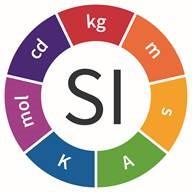There are few things as important as a business model when setting up a company. In many ways, more important than the product itself.
Because of that, I give it a lot of thought (both for my own projects and my clients). A thread. 👇
Then I layered on my own assessment of their respective business models. Here are are the main takeaways.
1. 💸 The most prominent business model on the top growth list was SaaS (either freemium, or in combination with another business model like insurance).
2. 🎩 Subscription hardware and B2B2C are examples of fairly new business models making their marks in terms of growth..
3. 👴 Traditional business models like wholesalers and providers of financial services were underpinning products built with new technologies
4. 💳 On the financial services front - spread businesses and credit card/debit card models were prominent
...
5. 🔧 Marketplaces still work when paired with the right supply
6. ⚙️ More complicated solutions operate on a per project basis, and scale based on complexity and number of seats
7. 💯 Traditional business models still win, and many new cos still use old models
Details👇
Based on the growjo growth model, it appears that SaaS is the surest way to achieve speed in terms of growth in revenue and valuation. @airtable, @figma, @loom, @circleCI are the main companies on this list using “freemium SaaS” as their business model.
The other interesting trend on this list is the emergence of the subscription hardware combination. These companies make revenue from selling hardware as well as charging a subscription for their ongoing software service (like Tempo).
The final trend in subscriptions is this new idea of using B2B2C to maximize growth and revenues. The most prominent companies on this list using the B2B2C model is @calm, @modernhealthco , and @LyraHealth .
The other big takeaway from this list was that there were two main business models that are being used by these fast growing companies: wholesale and financial services. In many cases, the products were new, but the business models were old.
Wholesalers were very prominent on this list, including CrescoLabs GoExpedi GrowGeneration ImpossibleFoods VentureGlobal AppHarvest GOAT PerfectDay and Faire.
One thing I noticed was the use of new technologies to re-integrate existing business models that are tried and true. One business type, the spread business, was well represented. A spread business is a company that uses rate arbitrage to make money.
A great example of this is @BlockFi . They make money by borrowing capital at a certain rate (the interest rates it pays to users) and lends it a higher rate (the interest rates it offers for BTC/ETH/GUSD loans).
Other companies in the financial services are using riffs on credit cards and debit cards to make money, offering slightly better rates or benefits than their traditional competitors.
The Marketplace model was also represented. Companies like Landing Dutchie @SonderMind Park+ all were on the list and used the marketplace model. One company, @ApplyBoard , used a marketplace model paired with a rev. share model based on placement.
More complicated solutions generally used a “per project” model. The pricing model generally scaled based on the scale of the project or the number of seats required. Often times, this was set as a one time payment.
If you want to see the list I put together of the business models for the top 80 growth companies projected for 2021, feel free to DM me and I’ll provide it. 🙂
🎤drop
You May Also Like
I like this heuristic, and have a few which are similar in intent to it:
Hiring efficiency:
How long does it take, measured from initial expression of interest through offer of employment signed, for a typical candidate cold inbounding to the company?
What is the *theoretical minimum* for *any* candidate?
How long does it take, as a developer newly hired at the company:
* To get a fully credentialed machine issued to you
* To get a fully functional development environment on that machine which could push code to production immediately
* To solo ship one material quanta of work
How long does it take, from first idea floated to "It's on the Internet", to create a piece of marketing collateral.
(For bonus points: break down by ambitiousness / form factor.)
How many people have to say yes to do something which is clearly worth doing which costs $5,000 / $15,000 / $250,000 and has never been done before.
Here's how I'd measure the health of any tech company:
— Jeff Atwood (@codinghorror) October 25, 2018
How long, as measured from the inception of idea to the modified software arriving in the user's hands, does it take to roll out a *1 word copy change* in your primary product?
Hiring efficiency:
How long does it take, measured from initial expression of interest through offer of employment signed, for a typical candidate cold inbounding to the company?
What is the *theoretical minimum* for *any* candidate?
How long does it take, as a developer newly hired at the company:
* To get a fully credentialed machine issued to you
* To get a fully functional development environment on that machine which could push code to production immediately
* To solo ship one material quanta of work
How long does it take, from first idea floated to "It's on the Internet", to create a piece of marketing collateral.
(For bonus points: break down by ambitiousness / form factor.)
How many people have to say yes to do something which is clearly worth doing which costs $5,000 / $15,000 / $250,000 and has never been done before.
Oh my Goodness!!!
I might have a panic attack due to excitement!!
Read this thread to the end...I just had an epiphany and my mind is blown. Actually, more than blown. More like OBLITERATED! This is the thing! This is the thing that will blow the entire thing out of the water!
Has this man been concealing his true identity?
Is this man a supposed 'dead' Seal Team Six soldier?
Witness protection to be kept safe until the right moment when all will be revealed?!
Who ELSE is alive that may have faked their death/gone into witness protection?

Were "golden tickets" inside the envelopes??

Are these "golden tickets" going to lead to their ultimate undoing?
Review crumbs on the board re: 'gold'.

#SEALTeam6 Trump re-tweeted this.

I might have a panic attack due to excitement!!
Read this thread to the end...I just had an epiphany and my mind is blown. Actually, more than blown. More like OBLITERATED! This is the thing! This is the thing that will blow the entire thing out of the water!
Tik Tok pic.twitter.com/8X3oMxvncP
— Scotty Mar10 (@Allenma15086871) December 29, 2020
Has this man been concealing his true identity?
Is this man a supposed 'dead' Seal Team Six soldier?
Witness protection to be kept safe until the right moment when all will be revealed?!
Who ELSE is alive that may have faked their death/gone into witness protection?

Were "golden tickets" inside the envelopes??

Are these "golden tickets" going to lead to their ultimate undoing?
Review crumbs on the board re: 'gold'.

#SEALTeam6 Trump re-tweeted this.









